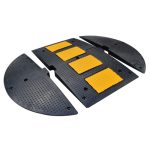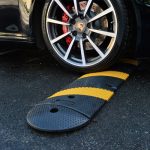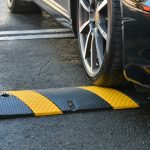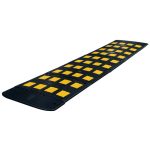Speed bumps are a prevalent traffic calming measure, but they can also raise questions for drivers and residents alike. Here at Unimat Traffic, we want to ensure you have all the information you need. So, let’s address some of the most Frequently Asked Questions (FAQs) regarding speed bumps:
1. How much do speed bumps slow down traffic?
Speed bumps typically aim to reduce speeds to between 5-20 mph (8-32 km/h). The effectiveness depends on the specific design and height of the bump.
2. Can I damage my car driving over a speed bump?
If you approach a speed bump at a safe, recommended speed, you shouldn’t experience any damage. However, hitting a speed bump at high speed can damage your vehicle’s undercarriage.
3. Are there different types of speed bumps?
Yes! Speed humps, speed cushions, and speed tables are all variations designed for different purposes. Speed cushions offer a smoother transition, while speed tables provide a flat-topped area for a more comfortable ride at the desired speed limit.
4. Are speed bumps noisy?
Speed bumps themselves aren’t inherently noisy. However, vehicles driving over them at high speeds can generate more noise. Using proper speed and selecting the right speed bump type for the area can minimize noise concerns.
5. Do speed bumps slow down emergency vehicles?
Ideally, speed bumps are designed to allow emergency vehicles to pass through with minimal slow down. Some speed bumps have designated channels on the side for emergency vehicles.
6. Who is responsible for maintaining speed bumps?
The responsibility for maintaining speed bumps typically falls on the road authority or the property owner where they are installed.
7. Are there any alternatives to speed bumps?
Yes, there are other traffic calming measures like chicanes (narrowed roadways), raised crosswalks, and traffic circles. The best solution depends on the specific traffic flow and safety concerns of the area.
Unimat Traffic: Your Speed Bump Experts
Unimat Traffic offers a comprehensive range of speed bump for sale solutions and expert advice to help you find the perfect fit for your needs. Contact us today to discuss your traffic calming requirements and ensure a safer environment for your community.







